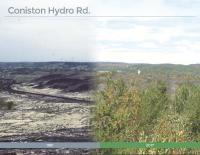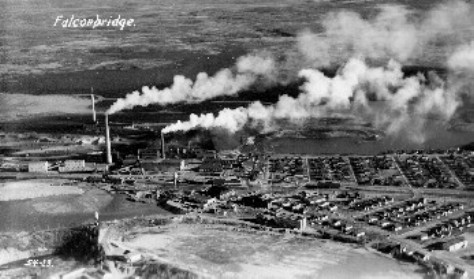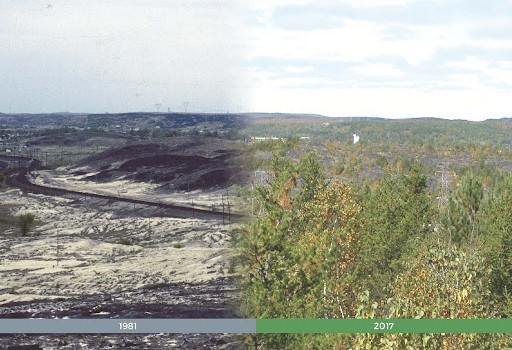
By Coleman Camps, May 26, 2022
“For me, Sudbury is an indication that we aren't going to lose. Climate change is the biggest and most crucial challenge we face. There is hope.”
- Paul Kennedy, Broadcast Journalist for the CBC
Sudbury, Ontario, a city with lush parks and lakes and surrounded by thick bush, was once comparable to the surface of the moon. The story of the environmental reclamation of Sudbury is an inspirational tale which demonstrates the effectiveness of climate action.
The logging and mining industry settled into the city in the late 1800s, and what followed was an environmental disaster. Sulfur dioxide released into the environment from the smelting of copper and nickel ores caused acid rain, and formed a black coating on rocks in the area, still visible to this day. Surrounding lakes were acidified, wreaking havoc on their ecosystems. Furthermore, copper and nickel accumulated in the soil, making it inhospitable for plants to grow. At one point, the city was barren of any vegetation for 40 square miles around the city. Sudbury’s reputation for its infertile landscape was cemented in 1971 and ‘72 when NASA sent its astronauts to train in Sudbury for the Apollo 16 and 17 missions, due to its apparent resemblance to the terrain of the moon.
The negative trends in Sudbury’s aesthetic reflected the quality of life for its inhabitants. Eventually enough was enough, and action was taken. Researchers determined that treating the toxic, metal contaminated soil with lime would allow for vegetation to grow. Beginning in 1978, volunteers and students executed a campaign of liming the ground and planting seeds and saplings, resulting in a steady regreening of Sudbury. As of now, over 10,000,000 trees/bushes have been planted in the region, and the city has some of the cleanest air in the province. The re-greening process continues to this day, which benefits us all, as trees and shrubs trap CO2 from the atmosphere, provide habitats for wildlife and arguably make communities nicer places to live.

(Source: Greater Sudbury Historical Database)

In 1972, the Inco Superstack was built with the intention of improving air quality and reducing the effect of sulfur dioxide pollution. Standing at 381 meters tall, it is the second tallest freestanding structure in Canada and is prominent in Sudbury’s cityscape. By emitting fumes from smelting higher in the air, Sudbury’s air quality improved dramatically. However, one must question the ethics and effectiveness of this approach. Certainly, the United States found it objectionable that polluting fumes were wafting over the border from Canada (consider that Sudbury was the largest emitter of sulfur dioxide at one point). In 1991, Canada and the U.S entered an air quality agreement intended on reducing the crossing of air pollutants across the border. This agreement set allowable emissions of sulfur oxides and nitrogen oxides for the two countries, and has served to reduce the two pollutants 69% and 59% respectively in Canada. As for the Superstack, it was decommissioned in 2020, and is set to be replaced with two smaller stacks. This change is predicted to reduce greenhouse gas emissions 40%.
So, what are some lessons to be learned from Sudbury? First, the negligence of the mining and smelting industry, and the devastation that followed is an undeniable example of how industrial activity negatively impacts the environment. Second, when citizens, politicians, academics and industry cooperate, change is achievable and closer than we might think. It currently might seem inconceivable to completely change the way our society and economy function in regards to sectors such as the energy industry. But we saw in Sudbury, when things got bad enough, action happened. Let the story of Sudbury be both a cautionary example of why we must be proactive when it comes to our environment, and an example of the benefits of community action. Let’s act now before it is too late.

For further information:
Canada-U.S Air Quality Agreement Overview
Inco Superstack decommissioned
Sudbury Regreening Program 5 Year Plan
